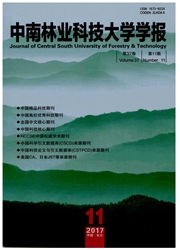

 中文摘要:
中文摘要:
2009年7月至2010年4月,在湖南省森林植物园用树脂芯原位测定马尾松和樟树林土壤中有效氮含量及矿化速率。结果表明:樟树和马尾松林分土壤中铵态氮和硝态氮含量均有明显的季节动态,不同月份间差异显著;2种林分铵态氮的季节变化趋势均为7月〉10月〉1月〉4月,马尾松林土壤中铵态氮含量要高于樟树林(10月份除外);2种林分硝态氮的季节变化趋势均为10月〉7月〉1月〉4月,马尾松土壤硝态氮含量高于樟树林;在各月份,樟树与马尾松林2种林分之间的土壤中净氮化量、净铵化量、净硝化量差异均显著,但两者拥有相同的季节变化趋势,1月〉4月〉10月〉7月。这一研究结果有助于更好地认识亚热带森林生态系统土壤氮循环过程。
 英文摘要:
英文摘要:
From July 2009 to April 2010,soil available N content and mineralization rate have been determined with resin-core technique in Cinnamomum camphora and Pinus massoniana forests in Hunan Forest Botanical Garden.The results show that: ammonium and nitrate in soil had significantly seasonal dynamics in camphor and masson pine forest,and had significant difference between different months.Ammonium contents in soil of the two stands had the same seasonal trend: JulyOctoberJanuaryApril,were higher in masson pine forest soil than those in camphor forest(except October);The seasonal trends of nitrate content in the two stand was that: OctoberJulyJanuaryApril,which was higher in masson pine soil than in camphor forest soil.In each month,the net quantity of nitrogen mineralization,net amount of ammonium and net amount of nitrification in soils were significantly differ between in camphor and masson pine forest,but all of them had the same seasonal trends in both forests: JanuaryAprilOctoberJuly.The results can help us to know soil nitrogen cycle in tropical forest ecosystems better.
 同期刊论文项目
同期刊论文项目
 同项目期刊论文
同项目期刊论文
 期刊信息
期刊信息
